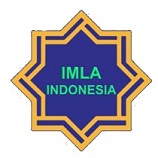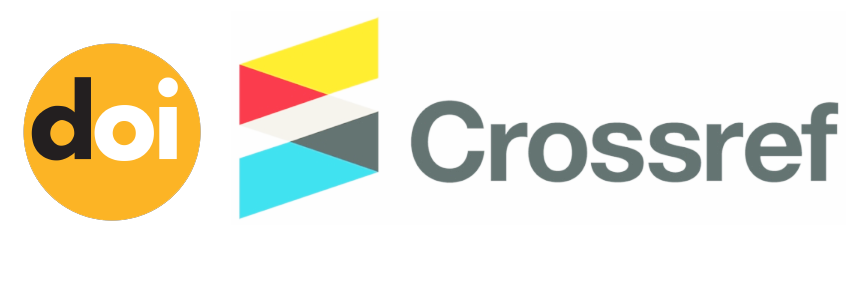THE GENDER EQUALITY CAMPAIGN IN PICTURE STORY AL-BINTU MITSLUL WALAD (A ROLAND BARTHES’S SEMIOTICS STUDY)
Abstract
Keywords
Full Text:
PDF (Bahasa Indonesia)References
12th Cairo International Animation Forum (ملتقى القاهرة الدولى للرسوم المتحركة الدورة الثانى عشر),. (t.t.). http://www.ciaf.gov.eg/?q=ar/node/2027
Aalaa, G. A. (2011). نشأة وتطور أدب الأطفال العربي. Universitas Iskandariyyah. https://doi.org/10.13140/RG.2.1.3302.7444
Al Ma’dul, F. (2009). Al Bintu Mitsul Walad. Nahdhah Mishr.
Baden, S. (1992). The Position of Women in Islamic Countries: Possibilities, Constraints and Strategies for Change. BRIDGE (development - gender). https://www.eldis.org/document/A52016
Bahij, Y. (2018, Januari 29). المعدول في ندوة مستقبل التعاون بين مصر والصين: جائزة سوزان مبارك سبب رئيسي في رواج الكتابة للطفل. بوابة الأهرام. https://gate.ahram.org.eg/News/1808451.aspx
Barthes, R. (1957). Mythologies. Editions de Suil.
Carter, A., Aimee Hanstein, Ayse Ergene, & Ayse Ergene. (2023, Maret 27). Women in the Arab Spring Uprisings: Egypt. https://www.orionpolicy.org/research/174/women-in-the-arab-spring-uprisings-egypt
Dawoud, A. (2012). Why Women are Losing Rights in Post-Revolutionary Egypt. Journal of International Women’s Studies, 13(5), 160–169. https://vc.bridgew.edu/jiws/vol13/iss5/14
Djollong, A. F. (2018). Al Mar’ah Dalam Al Quran. Jurnal ISTIQRA, 6, No. 1. https://jurnal.umpar.ac.id/index.php/istiqra/article/view/473
Ferber, A. (2011). “Women in the ‘New Egypt’: What Next?” Tel Aviv Notes: An Update on Middle EasternDevelopments, 5(24).
Ibda, F. (2015). Perkembangan Kognitif: Teori Jean Piaget. Jurnal Intelektual, 3(1). https://www.jurnal.ar-raniry.ac.id/index.php/intel/article/view/197
Miles dan Huberman. (1992). Analisis Data Kualitatif. Universitas Indonesia Press.
Munawwir, A. W. (1997). Kamus Al-Munawwir Arab-Indonesia. Pustaka Progressif.
Nasir, M. A. (2007). Quo Vadis Feminisme Timur Tengah (Dilema Gerakan Wanita di Mesir), In T. Harwati & Alkusairi (Eds.), Menolak Subordinasi, Menyeimbangkan Relasi (pp. 15–31). Pusat Studi Wanita (PSW) IAIN Mataram.
Nugraha, R. S., Arummi, A., & Hidayati, T. Y. N. (2020). Hak-hak Anak dan Ideologi Orang Dewasa: Kajian Mitos Roland Barthes dalam Novel Grafis Salma Ta’rifu Huquuqaha. Al-Tsaqafa : Jurnal Ilmiah Peradaban Islam, 17(2), 161-172. https://doi.org/10.15575/al-tsaqafa.v17i2.10095
Nugraha, R. S., Yoesoef, M., & Arummi, A. (2020). Gender Equality and Children’s Rights: The Adults’ Ideology in Two Egyptian Children’s Graphic Novels. Proceedings of the First International Seminar on Language, Literature, Culture and Education (ISLLCE) 2019 .EAI. https://eudl.eu/doi/10.4108/eai.15-11-2019.2296253
Nurgiyantoro. (2005). Sastra Anak Pengantar Pemahaman Dunia Anak. UGM Press.
Puryanto, E. (2008). Konsumsi Anak dalam Teks Sastra di Sekolah. Makalah dalam Konferensi Internasional Kesusastraan XIX HISKI.
Ridwan, N. A. (2021). نشأة الأدب الأطفال و أهدافه في الأدب العربي الحديث. Prosiding Konferensi Nasional Bahasa Arab, 7. http://prosiding.arab-um.com/index.php/konasbara/article/view/1082
Rumidjan. (2013). Dasar Keilmuan dan Pembelajaran Sastra Anak SD. FIP UM.
Rusmana. (2014). Filsafat Semiotika: Paradigma, Teori, dan Metode Interpretasi Tanda dari Semiotika Struktural Hingga Dekonstruksi Praktis. Pustaka Setia.
Santoso, A. (2022). Melihat Sastra Anak Dunia Sebagai Alat Perjuangan Ideologi. SEMIOTIKA: Jurnal Ilmu Sastra Dan Linguistik, 23(2), 123-135. https://doi.org/10.19184/semiotika.v7i2.31470
Sudaryanto. (2015). Metode dan Aneka Teknik Analisis Bahasa. Duta Wacana University Press.
WS, H. (2015). Sastra Anak: Kajian Tema, Amanat, dan Teknik Penyampaian Cerita AnakTerbitan Surat Kabar. Angkasa.
Yasir. (2021, Juli 4). فاطمة المعدول: هناك تطور كبير بـ"أدب الطفل" في الوقت الحالي. القاهرة 24. https://www.cairo24.com/1241834
DOI: https://doi.org/10.20961/cmes.16.2.59910
Refbacks
- There are currently no refbacks.
Copyright (c) 2023 Center of Middle Eastern Studies (CMES): Jurnal Studi Timur Tengah

This work is licensed under a Creative Commons Attribution-ShareAlike 4.0 International License.
| Copyright of CMES ISSN 2085-563X (print) and ISSN 2502-1044 (online) CMES Journal is licensed under a Creative Commons Attribution-ShareAlike 4.0 International License. | CMES (Center of Middle Eastern Studies) Print ISSN: 2085-563X Online ISSN: 2502-1044 Website: https://jurnal.uns.ac.id/cmes/index Email: cmes@mail.uns.ac.id Published by: Universitas Sebelas Maret Office: Department of Arabic Literature, Faculty of Cultural Science, Universitas Sebelas Maret Ir. Sutami Street, No. 36A, Surakarta, Jawa Tengah 57126 Phone: +62 822-4000-2313 |















